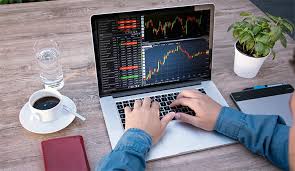
Forex Trading Explained: A Comprehensive Guide
Forex trading, or foreign exchange trading, refers to the process of buying and selling currencies on the foreign exchange market with the aim of making a profit. Currencies are always traded in pairs, such as EUR/USD (Euro/US Dollar) or GBP/JPY (British Pound/Japanese Yen), meaning that when you trade one currency, you are simultaneously trading another. In this article, we will explore the fundamentals of forex trading, the workings of the forex market, and essential trading strategies to help you get started in this fascinating world. If you’re looking for a reliable source to enhance your knowledge and skills, you can visit forex trading explained FX Trading UZ.
Understanding the Forex Market
The forex market is the largest and most liquid financial market in the world. It operates 24 hours a day, five days a week, allowing traders from different time zones to buy and sell currencies at any time. The market is decentralized, which means that it does not have a physical location or centralized exchange like stock markets. Instead, currency trading occurs over-the-counter (OTC), through a network of banks, brokers, and financial institutions. The forex market is influenced by various factors, including economic indicators, geopolitical events, and market sentiment.
Currency Pairs and How They Work
In forex trading, currencies are quoted in pairs. The first currency in a pair is known as the base currency, while the second is called the quote currency. The exchange rate represents how much of the quote currency is needed to purchase one unit of the base currency. For example, if the EUR/USD pair is trading at 1.1800, it means that 1 Euro is equivalent to 1.18 US Dollars. Traders can speculate on whether the exchange rate will rise or fall, enabling them to potentially profit from their trades.
Types of Forex Trading
There are several different types of forex trading that traders can engage in, including:
- Day Trading: Day traders open and close positions within the same trading day, aiming to profit from short-term price movements.
- Swing Trading: Swing traders hold positions for several days or weeks, targeting medium-term price trends.
- Scalping: Scalpers make frequent trades throughout the day, attempting to capture small price movements.
- Position Trading: Position traders take long-term positions based on fundamental analysis, holding trades for weeks, months, or even years.
Key Factors Influencing Forex Prices
Forex prices are determined by various factors, including:

- Economic Indicators: Reports such as GDP, unemployment rates, and consumer price index (CPI) can greatly influence currency values.
- Interest Rates: Central banks set interest rates, which affect currency demand. Higher interest rates often lead to stronger currencies.
- Political Stability: Countries with stable governments and strong economic performance tend to attract foreign investment, boosting currency value.
- Market Sentiment: Traders’ perceptions and emotions can drive currency prices, often leading to volatility in the market.
How to Start Trading Forex
Getting started with forex trading involves a few key steps:
- Educate Yourself: Familiarize yourself with forex terminology, trading strategies, and market analysis. Online courses, books, and webinars can be valuable resources.
- Choose a Broker: Select a reputable forex broker that suits your trading style, offers competitive spreads, and provides a user-friendly trading platform.
- Open a Trading Account: Sign up for a trading account with your chosen broker, which often requires providing personal information and undergoing a verification process.
- Practice with a Demo Account: Before trading with real money, utilize a demo account to practice your trading skills and test strategies without any financial risk.
- Start Trading: Once you’re ready, deposit funds into your trading account and begin trading with a clear strategy and risk management plan.
Essential Trading Strategies
To succeed in forex trading, traders often utilize various strategies, including:
- Trend Following: Traders analyze market trends and make trades in the direction of the established trend.
- Breakout Trading: This strategy involves identifying key levels of support and resistance and placing trades when the price breaks through these levels.
- Range Trading: Traders look for price patterns where a currency pair trades within a defined range, buying at the support level and selling at resistance.
- Fundamental Analysis: This method focuses on economic indicators, news events, and geopolitical developments to forecast future price movements.
Risk Management in Forex Trading
Managing risk is crucial for success in forex trading. Here are some fundamental risk management techniques:
- Set Stop-Loss Orders: Use stop-loss orders to automatically close a trade at a predetermined price to limit potential losses.
- Risk-Reward Ratio: Aim for a favorable risk-reward ratio (e.g., risking $1 to potentially gain $2) to improve long-term profitability.
- Diversify Your Portfolio: Avoid putting all your capital into a single trade by diversifying across different currency pairs and strategies.
- Only Trade with Money You Can Afford to Lose: Ensure your trading account balance is an amount you can afford to lose without affecting your financial stability.
Conclusion
Forex trading can be a rewarding venture if approached with the right knowledge, strategies, and risk management techniques. Understanding the complexities of the forex market and developing a disciplined trading plan will increase your chances of success in this dynamic environment. Remember that trading involves risks and it’s crucial to continue learning and adapting to market changes. Whether you’re a novice or an experienced trader, there’s always something new to explore in the world of forex trading.